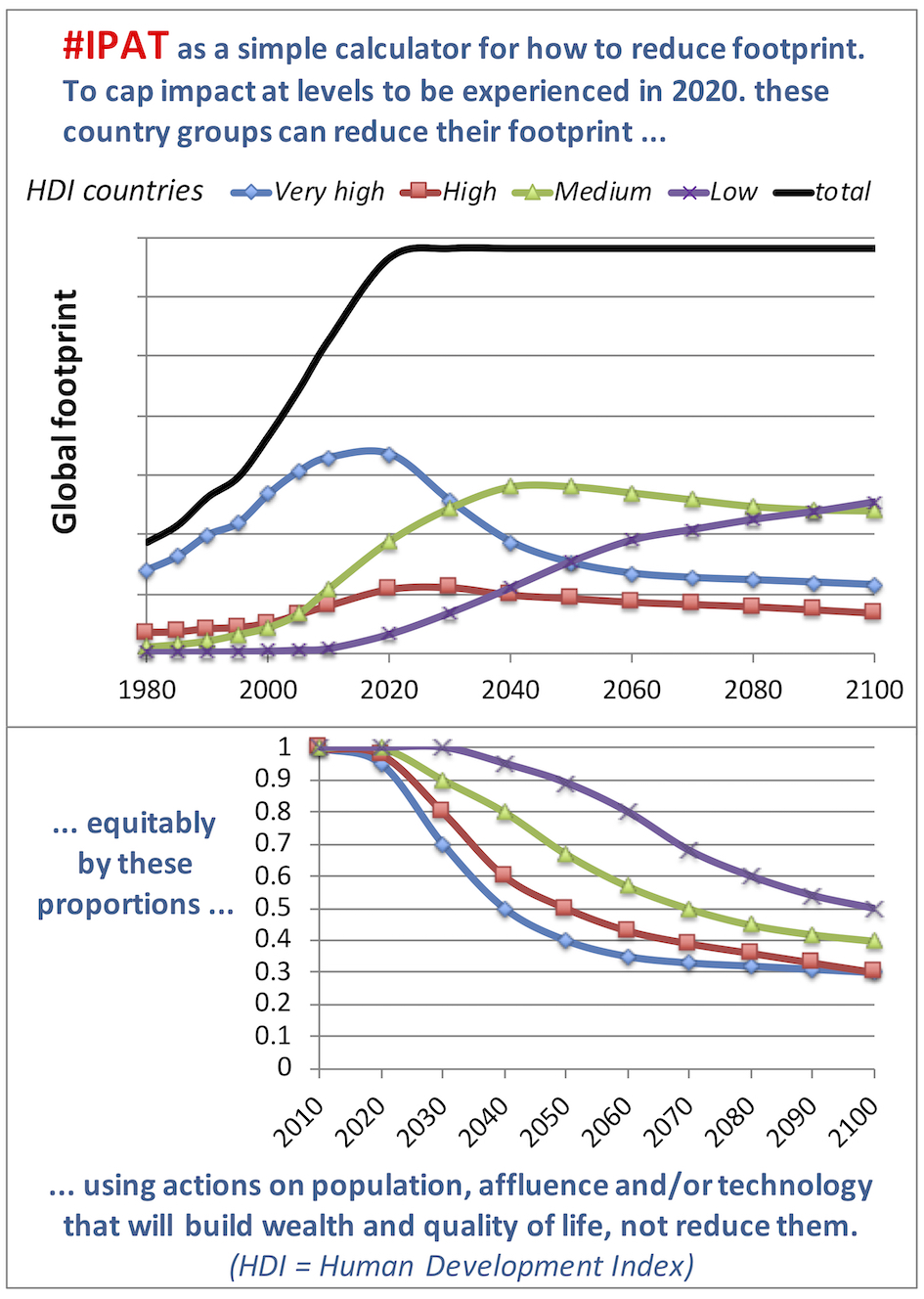The IPAT equation provides a simple but powerful model for understanding sustainability, particularly from the challenge posed by the Anthropocene—how to reduce personal or societal impact. Impact is calculated by multiplying population, affluence and technology, and a ‘reduction coefficient’ e is used to explore targeted reductions in impact of different entities to cap total (summed) impact. The model offers two solutions. First, that all three factors are essential in determining total impact; a focus on just one or two is not justifiable without credibly addressing the other(s). Second, by presenting reduction of impact as a proportion of current activity, the solution becomes accessible to an individual actor (e.g., an individual, family, organization, or country). Application of the model is illustrated based on household weekly food consumption from cultures around the world. The model helps unify a) disparate perspectives on population, affluence and technology, which currently oppose one another from a basis of belief or dogma, and b) different sectors (e.g., food production, energy, climate impacts and others), as well as actors, so they can jointly identify strategies to resolve their contributions to approaching larger scale sustainability.

